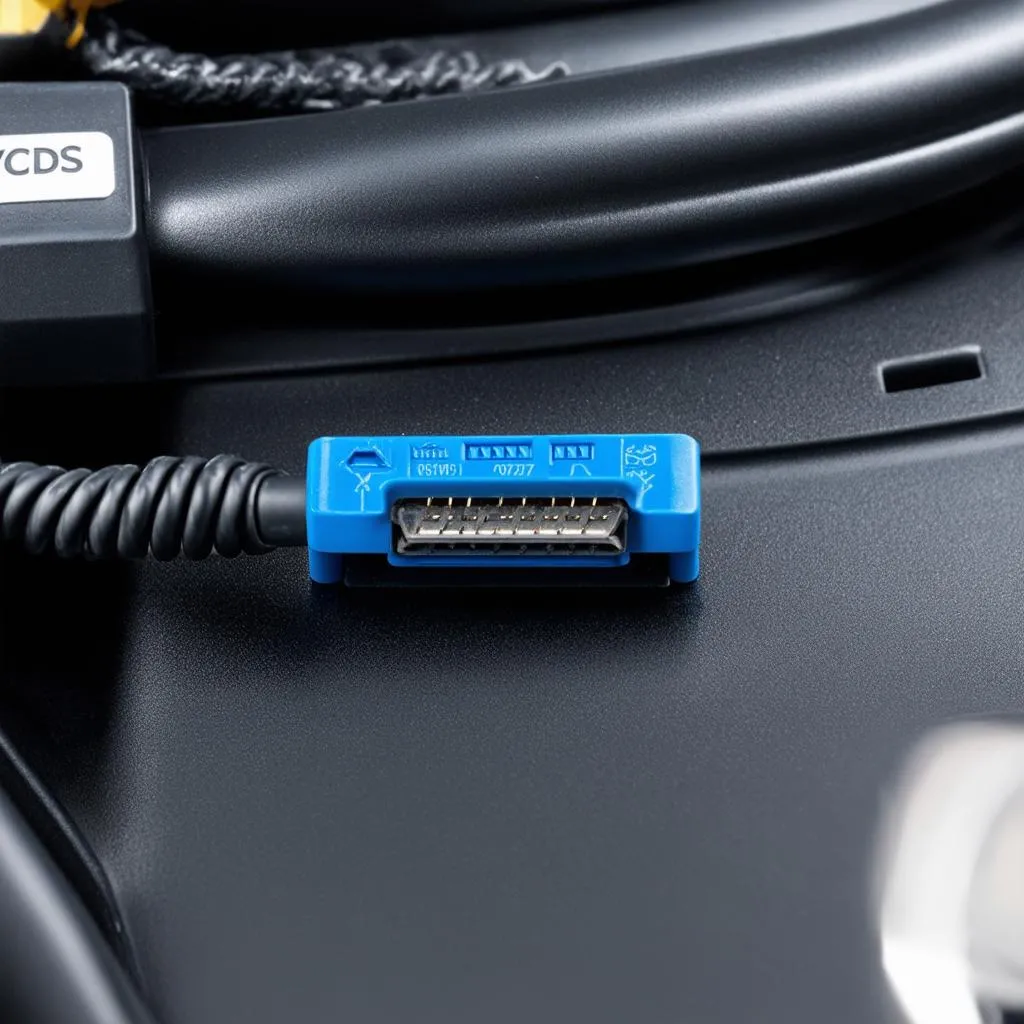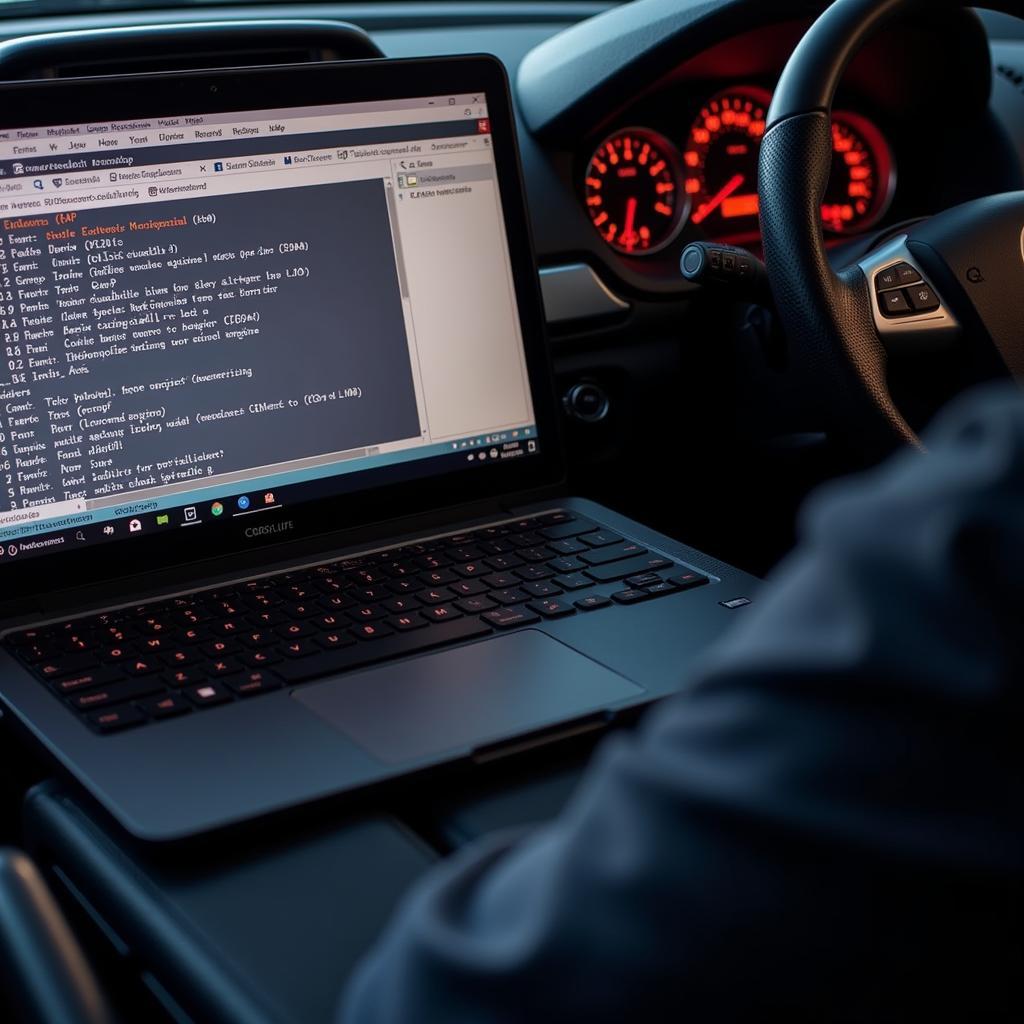The Volkswagen Passat (B8) has earned its reputation for reliability and performance. However, even the most well-engineered vehicles can benefit from advanced diagnostics and customization. This is where VCDS (Vag-Com Diagnostic System) comes in, a powerful software suite that empowers owners to delve deeper into their cars’ systems. This article provides a comprehensive guide to using VCDS specifically on the 2017 Passat, unveiling its capabilities and addressing common queries.
Understanding VCDS and its Relevance to Your 2017 Passat
VCDS is a Windows-based diagnostic software that interfaces with the onboard computers in Volkswagen Audi Group (VAG) vehicles, including your 2017 Passat. It allows users to:
- Read and clear fault codes: Diagnose engine, transmission, airbag, ABS, and other system faults with detailed descriptions.
- Access live data: Monitor real-time sensor readings for in-depth analysis of vehicle performance.
- Activate hidden features: Enable comfort and convenience features not accessible through conventional means.
- Adjust and customize settings: Tailor various vehicle settings, such as lighting, locking, and convenience features, to your preference.
vcds-software-interface|VCDS Software Interface|A screenshot of the VCDS software interface displaying diagnostic information for a Volkswagen Passat.
Why is VCDS a Valuable Tool for 2017 Passat Owners?
Here’s how VCDS stands apart and can be particularly beneficial for your 2017 Passat:
- Unmatched Depth: Unlike generic OBD-II scanners, VCDS provides access to all the control modules in your Passat, offering a granular view of its inner workings.
- Cost-Effective Diagnostics: VCDS can potentially save you significant costs associated with dealership diagnostic fees.
- Personalization: Unlock hidden features and tailor your driving experience.
- Preventative Maintenance: Proactive monitoring with VCDS allows you to identify potential issues before they escalate.
Using VCDS on Your 2017 Passat
Getting Started:
- Purchase a Genuine Interface: Invest in a legitimate VCDS interface from a reputable vendor to ensure compatibility and support.
- Install the Software: Download and install the latest version of the VCDS software from the official Ross-Tech website (the developers of VCDS).
- Connect to Your Passat: Connect the VCDS interface to your computer’s USB port and then to the OBD-II port located under the driver’s side dashboard.
connecting-vcds-to-passat|Connecting VCDS to Passat|A person connecting a VCDS interface cable to the OBD-II port of a Volkswagen Passat.
Basic Operation:
- Launch VCDS: Open the VCDS software and select your vehicle model (2017 Passat).
- Scan for Fault Codes: Navigate to the relevant control module (e.g., engine) and select “Fault Codes.” VCDS will display any stored or pending fault codes.
- Clear Fault Codes: After addressing the root cause of a fault, use VCDS to clear the code from the vehicle’s memory.
- Access Live Data: View real-time sensor readings in various formats (graphs, gauges) for in-depth analysis.
Note: Exercise caution when making modifications. Incorrectly adjusting certain settings can potentially impact vehicle functionality. Always refer to the official Ross-Tech documentation and forums for guidance.
Common Applications of VCDS on a 2017 Passat
- Disabling the Start-Stop System: Many find the automatic start-stop feature intrusive. VCDS allows you to adjust this feature’s behavior or disable it entirely.
- Needle Sweep: Activate a dramatic gauge “sweep” during startup for a touch of visual flair.
- Adjusting the Lighting Configuration: Modify coming home/leaving home light duration, enable/disable daytime running lights (DRLs), and customize other lighting preferences.
- Tweaking Transmission Shift Points (DSG): Fine-tune the shift behavior of your DSG transmission for smoother or sportier performance.
FAQs About Using VCDS with a 2017 Passat
1. Is Using VCDS Safe for My Car?
When used responsibly and with proper knowledge, VCDS is safe. However, making uninformed changes to critical settings can have unintended consequences. Always research thoroughly and proceed with caution.
2. Can I Update My Passat’s Firmware with VCDS?
While VCDS allows for advanced modifications, firmware updates are typically handled through dealerships using specialized equipment and software.
3. What is Long Coding, and Why is it Relevant?
Long Coding refers to the process of activating or deactivating features within a control module by modifying its binary code. VCDS simplifies this process, providing a user-friendly interface to make these changes.
Cardiagtech: Your Resource for Automotive Diagnostic Solutions
For enthusiasts and professionals seeking high-quality automotive diagnostic tools, CARDIAGTECH offers a range of reliable and cutting-edge solutions. Visit their website at Cardiagtech to explore their product offerings and take your diagnostic capabilities to the next level.
Conclusion
VCDS empowers 2017 Passat owners with unprecedented control and insight into their vehicles. By understanding its capabilities and following proper procedures, you can unlock hidden features, enhance performance, and potentially save on costly repairs.
Remember, thorough research and a cautious approach are key to utilizing VCDS effectively and safely. If you are unsure about any modification, seeking guidance from experienced VCDS users or contacting Ross-Tech support is always recommended.


